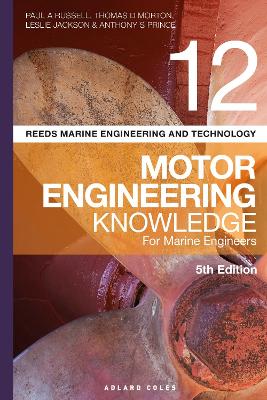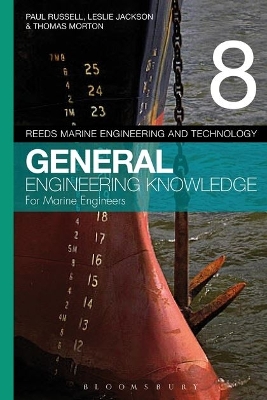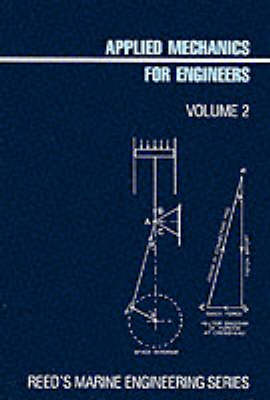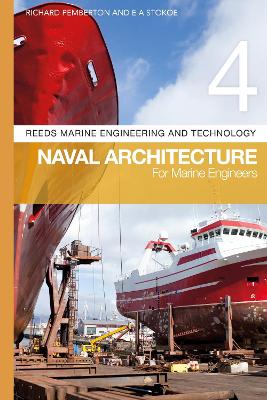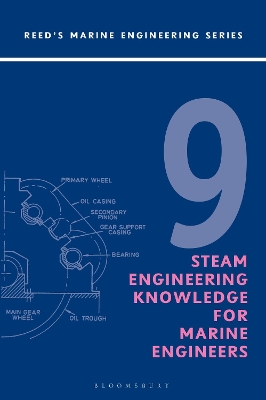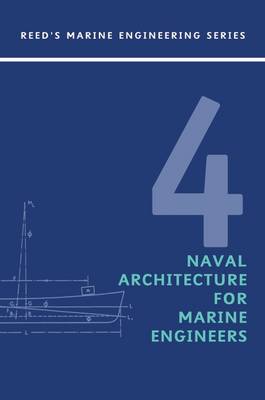Reeds Marine Engineering and Technology
7 total works
Reeds Vol 12 Motor Engineering Knowledge for Marine Engineers
by Paul Anthony Russell, Thomas D. Morton, Mr Leslie Jackson, and Anthony S Prince
Published 1 January 2012
Developed to complement Reeds Vol 8 (General Engineering for Marine Engineers), this indispensable textbook comprehensively covers the motor engineering syllabus for marine engineering officer cadets. Starting with the theoretical and practical thermodynamic operating cycles, the book is structured to give a description of the engines and components used to extract energy from fossil fuels and achieve high levels of efficiency.
Accessibly written and clearly illustrated, this book is the only guide available for marine engineering students focusing on the knowledge needed for passing the motor engineering certificate of Competency (CoC) examinations.
This new edition reflects all developments within the discipline and includes updates and additions on, amongst other things:
· Engine emissions and control engineering
· Fuel injection
· Starting and reversing
· Ancillary supply systems
· Safety and the environment
Plus updates to many of the technical engineering drawings.
Accessibly written and clearly illustrated, this book is the only guide available for marine engineering students focusing on the knowledge needed for passing the motor engineering certificate of Competency (CoC) examinations.
This new edition reflects all developments within the discipline and includes updates and additions on, amongst other things:
· Engine emissions and control engineering
· Fuel injection
· Starting and reversing
· Ancillary supply systems
· Safety and the environment
Plus updates to many of the technical engineering drawings.
Reeds Vol 5: Ship Construction for Marine Engineers
by Paul Anthony Russell and E A Stokoe
Published 30 June 2016
This textbook covers ship construction techniques and methods for all classes of Merchant Navy marine deck and engineering Certificates of Competency (CoC) as well as Undergraduate students studying Naval Architecture and Marine Engineering. It is complementary to Volume 4 (Naval Architecture) and Volume 8 (General Engineering Knowledge).
Importantly, this new edition contains up-to-date information on modern shipyards, dry-docking procedures and methods of construction. Extensively illustrated, the book also includes sample examination questions with worked examples answers to aid students in their learning.
Importantly, this new edition contains up-to-date information on modern shipyards, dry-docking procedures and methods of construction. Extensively illustrated, the book also includes sample examination questions with worked examples answers to aid students in their learning.
Reeds Vol 8 General Engineering Knowledge for Marine Engineers
by Paul Anthony Russell, Mr Leslie Jackson, and Thomas D. Morton
Published 1 January 2013
Developed to complement Reeds Vol. 12 (Motor Engineering for Marine Engineers), this textbook is key for all marine engineering officer cadets.
This new edition has been extensively updated to include the latest equipment, practices and trends in marine engineering, as well as incorporating the 2010 Manila Amendments, particularly relating to Management. Accessibly written and clearly illustrated, this book is the core guide focusing on the knowledge needed for passing the engineering certificate of Competency (CoC) examinations.
This key textbook takes into account the varying needs of students studying motor engineering, recognising recent changes to the Merchant Navy syllabus and current pathways to a sea-going engineering career, including National diplomas, Higher National Diploma and degree courses.
An essential buy for any marine engineering student.
This new edition has been extensively updated to include the latest equipment, practices and trends in marine engineering, as well as incorporating the 2010 Manila Amendments, particularly relating to Management. Accessibly written and clearly illustrated, this book is the core guide focusing on the knowledge needed for passing the engineering certificate of Competency (CoC) examinations.
This key textbook takes into account the varying needs of students studying motor engineering, recognising recent changes to the Merchant Navy syllabus and current pathways to a sea-going engineering career, including National diplomas, Higher National Diploma and degree courses.
An essential buy for any marine engineering student.
Steam Engineering Knowledge for Marine Engineers
by Leslie Jackson and Thomas D. Morton
Published November 1969
This book is a companion to Volume 8 - General Engineering Knowledge" in the "Reed's Marine Engineering Series", and is based on the DoT sylabus of Engineering Knowledge for the Class 2 and Class 1 Engineers Steam Certificates and Steam Endorsements. It includes a selection of questions of the type set in the exams for Class 2 and Class 1 Engineers."
Reeds Vol 4: Naval Architecture for Marine Engineers
by Dr Richard Pemberton and E A Stokoe
Published 18 October 2018
This textbook covers the theoretical, fundamental aspects of naval architecture for students preparing for the Class 2 and Class 1 Marine Engineer Officer exams. It introduces the basic foundation themes within naval architecture, (hydrostatics, stability, resistance and powering), using worked examples to show how solutions should be presented for an exam. The topics are ordered in a manner of a typical taught module, to aid the use of the book by lecturers as a compliment to a course.
Importantly, this updated edition contains updated text and figures in line with modern practice, including an update of many of the figures to three-dimensional diagrams, and a new section on computer software for naval architecture. The book also includes sample examination questions with worked examples answers to aid students in their learning.
Importantly, this updated edition contains updated text and figures in line with modern practice, including an update of many of the figures to three-dimensional diagrams, and a new section on computer software for naval architecture. The book also includes sample examination questions with worked examples answers to aid students in their learning.
Reeds Vol 9: Steam Engineering Knowledge for Marine Engineers
by Thomas D. Morton
Published 10 January 2019
This book is a companion to Volume 8 - General Engineering Knowledge in the "Reed's Marine Engineering Series", and is based on the DoT sylabus of Engineering Knowledge for the Class 2 and Class 1 Engineers Steam Certificates and Steam Endorsements. It includes a selection of questions of the type set in the exams for Class 2 and Class 1 Engineers.
v.4
Volume four of Reed's Marine Engineering Series" is based on the Naval Architecture syllabuses for the Certificate of Competency for Class 2 and Class 1 Marine Engineer Officers, administered on behalf of the UK Department of Transport and SCOTVEC. Explanatory diagrams and worked examples should assist the student to assimilate the principles, and typical exam questions should test knowledge."
